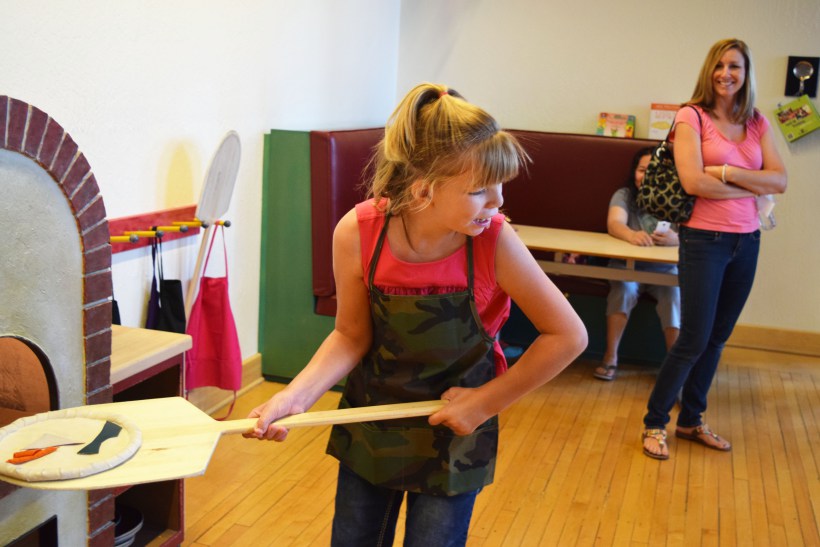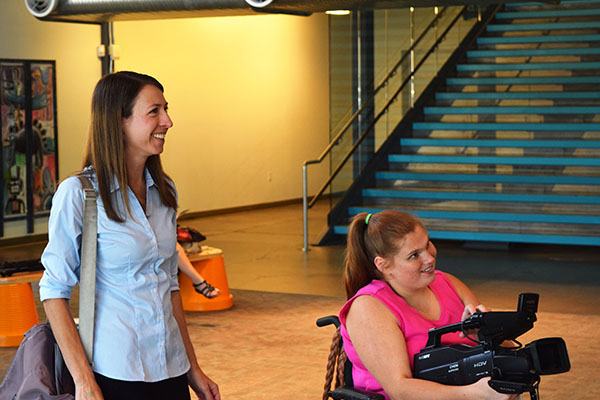Executive Summary
Great advancements have been made in accommodations for people who move differently, but what about those who think and communicate differently?
Just as a wheelchair ramp helps venues accommodate guests with physical disabilities, Pal Experiences helps venues achieve the next level of accessibility for guests with intellectual and developmental disabilities (IDD).
Our tools address some of the most common challenges that guests with IDD's face, including anxiety over new sensory experiences, communication issues and exclusion in the community. Each Pal Program contains a customized Pal Video and an interactive Pal Guide. These evidence-based tools empower individuals with intellectual and developmental disabilities to explore their communities by creating customized programs for the facilities, events, and places that all people have the right to enjoy.
We see ourselves as a bridge. We connect the community of guests of all abilities, including those with IDD’s, to the host venues in our community who wish to increase their business by enhancing the customer experience for this market. Pal is on a mission to make sure that everyone gets to go.

Mom and daughter are all smiles after using the Pal Program and baking a delicious yarn pizza at the Children's Museum of Phoenix.
Accommodating guests with 'hidden disabilities’
People with disabilities make up the largest minority group in the US. 18.7 percent of Americans, or about 57 million people, identify as having one or more disability (2010 U.S. Census). Of those individuals, 29 percent have a visible physical disability that affects the way they move. 71 percent have a non-visible intellectual or developmental disability (IDD). These are often “hidden” disabilities that affect the way they think, communicate, or process the world (“2016 Annual Report: The Global Economics of Disability.” Return on Disability Group. January 2016.).
Thanks to the Americans with Disabilities Act (ADA), significant improvements have been achieved for individuals with mobility challenges, but what about the more than forty million Americans with non-visible intellectual or developmental disabilities? They may not need a ramp to access a venue. They need something else. Going to public places can be challenging for individuals with intellectual or developmental disabilities, such as autism, Down syndrome, anxiety disorder, and ADHD. Sensory processing can be so overwhelming that many individuals and their families simply choose not to go out. We hear all the time, “it’s just easier to stay home.” When they go out, this feeling can be compounded by negative experiences, lack of information about how to prepare for experiences, poor customer service, and a social stigma about people with disabilities. In fact, one in three people affected by autism live in isolation (Journal of Autism and Developmental Disorders, 2013) and 70 percent of families affected by autism feel socially isolated (National Autistic Society, 2015). Pal Programs are designed to reduce the anxiety and stress by helping guests prepare for new experiences and educate our partners on being the best to every guest.
Pal Experiences creates tools that make away-from-home experiences more predictable, approachable, and fun for guests with IDD’s as well as their friends and family. By using evidence-based best practices, we have translated proven behavioral therapies, commonly used in clinical and at-home settings, and put them out into the community. Each Pal program consists of a Pal Video and a Pal Guide. The Pal Video is to be watched before leaving the home and provides a preview of what to expect. The video answers basic questions like, “Will there be security? When and where will I have to wait? Will it be loud? Where can I take a break if needed?” Each venue partner has a unique experience and we outline each important step in our three-minute video, thereby decreasing anxiety over not knowing what to expect. Pal uses the proven concept of video modeling to shoot each video, following an individual impacted by IDD and their family during a routine visit. The video model exhibits appropriate behaviors and expected interactions.

Melanie filming a Pal Video with a collaborating partner that helps adults with disabilities gain media skills.
The interactive digital Pal Guide is to be used during the away-from-home experience. It mirrors the video and provides a visual schedule. This tool is based on behavior chaining, the process of breaking complex tasks into smaller, more manageable steps. This method is highly effective in providing a structure to an unknown experience and helps provide a ‘first this, then this’ framework. Each step also contains a short video clip from the Pal Video as a reminder of what the step entails. This is video priming and it helps guests gain confidence in completing tasks by watching someone else successfully complete the task. Each step concludes with positive reinforcement, which serves as a motivator to encourage the participant to go to the next step. Logistical support is provided in the Pal Guide in the form of maps that show good places to take a break if needed, contact information for guest services or customer support, or a quick way to find the closest bathroom. Picture Exchange Communication is available to communicate needs (like a break, drink, or snack) and feelings (I love this, I do not like this, or I’m scared). Once a venue has these tools, they are a Pal Place, open for business to the millions of Americans and their family, friends, and caretakers impacted by IDD’s.
We are the first to market this unique set of tools, and after four years of work and nine Pal Programs, we are ready to scale. Our methods are effective. In fact, over 90 percent of our surveyed guests said they were more likely to visit a Pal Place that supported their needs. Our programs have evolved into an interactive technology that is built to scale, allowing us to streamline our creation process and onboard more Pal Places.
Pal Experiences mantra is ‘everyone gets to go.’ In addition to helping to make fun experiences in our community more inclusive, we want to help make daily errands like grocery shopping, as well as healthcare visits and educational experiences more inclusive as well. Our tools are designed using evidence-based best practices for the one in six children in the U.S. who are diagnosed with a developmental disability, and it certainly includes the one in forty boys in Arizona diagnosed with autism each year (CDC, 2010). But it also includes teens and adults with disabilities, as well as each of these individual’s family, friends, and caretakers. In total, this makes up a group three times the size of the U.S. Hispanic market (Return on Disability Group, 2016).
Pal creates programs that bridge the gap between individuals and families impacted by disabilities and venues, by doing this we can build communities where more positive and more frequent interactions occur between both. Individuals and families win by experiencing and enjoying supportive away from home experiences. Our host partners benefit by appealing to a new market and drawing visitors during off peak hours, enhancing their own brand and meeting and exceeding ADA regulations, while mitigating legal risks.
Everyone deserves the chance to go to the grocery store, to fly on a plane, to go out to eat, and to be a fan at a baseball park, despite the different ways we each move and think. This is inclusion. By creating a vast network of inclusive Pal Places for the away-from-home experiences people want to have and need to have, we build a community of support and acceptance. This is a community that embraces each unique member, and we all benefit from that.
About Pal Experiences
Pal Experiences creates digital tools that connect families impacted by autism and related intellectual and developmental differences with businesses inspired to offer them a better customer experience. Pal Videos show guests what to expect, and Pal Guides offer interactive, mobile-friendly assistive communication and logistical support during each experience. These tools are offered free to guests at PalExperiences.org, along with events, special offers, and “know before you go” tips. Pal Experience’s vision is to develop a vast network of certified Pal Places, autism-friendly entertainment venues, foodservice companies, retailers, and other service providers throughout the U.S. and beyond.


